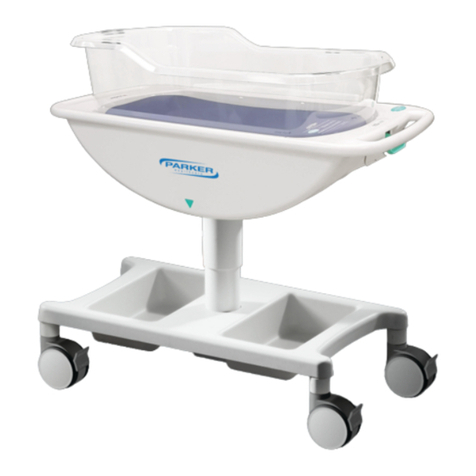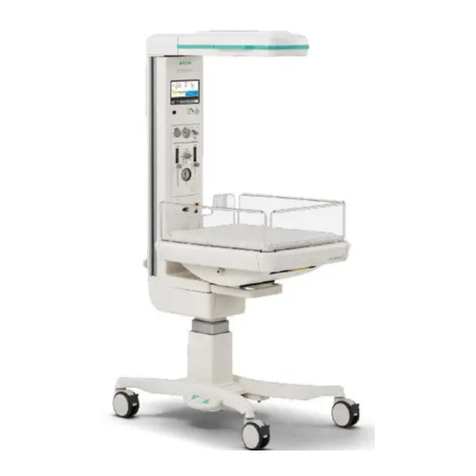
Table of Contents
INTRODUCTION........................................................... 1
PLEASE READ WITHOUT FAIL
[1] Safety Instructions.........................................10
1- 1. DANGER ................................................. 10
1-2. WARNING ............................................... 11
1-3. CAUTION ................................................ 14
[2] Parts Identification.........................................16
2-1. Main body ...................................................... 16
2-2. Operation panel ............................................ 18
2-3. Stands ............................................................ 19
PREPARATION
[3] Preparation before Use................................20
3-1. Assembly........................................................ 20
3-1-1. For HL Stand (Option) ........................ 20
3-1-2. For Cabinet Stand (Option)................ 20
3-2. Adjusting the HL Stand ................................ 21
3-3. Where to Install the Incubator..................... 21
3-4. Locking the Casters...................................... 22
3-4-1. For HL Stand (Option) ........................ 22
3-4-2. For Cabinet Stand (Option)................ 22
3-5. Securing the Unit to an Ambulance ........... 23
3-6. Inspections Before Start .............................. 23
[4] Power requirements ......................................24
4-1. Power Outlet and Grounding....................... 24
4-2. Using an AC Power Source
(AC100-240V)................................................ 25
4-3. Using the Built-in Battery Power Supply.... 27
4-4. Using an External DC Power Source
(DC12V/24V) ................................................. 31
4-4-1. Requirements for External
DC Power Source................................ 31
4-4-2. Connecting External DC Power
Source and Connection Cable .......... 31
OPERATION
[5] Display Screens ..............................................34
5-1. Overview of Display Screens...................... 34
5-2. Main screen ................................................... 35
5-3. Menu Screen ................................................. 39
[6] Setting the Incubator Temperature and
Placing the Infant in the Incubator.........41
6-1. Setting the Incubator Temperature............. 41
6-2. Placing the Infant in the Incubator ............. 43
6-3. Drawing out the Mattress Platform............. 46
6-4. Skin Temperature Monitoring ...................... 46
[7] Oxygen Supply ................................................49
7-1. Supplying Oxygen......................................... 50
7-2. Using the Oxygen Monitor........................... 51
7-2-1. Calibrating the Oxygen Monitor......... 51
7-2-2. Setting the Upper and Lower Alarm
Limits for Oxygen Level ...................... 53
[8] Pulse Oximeter ................................................55
8-1. Attaching the SpO2Sensor ......................... 55
8-2. Connecting the Patient Cable ..................... 56
8-3. Setting Alarm Limits...................................... 56
8-3-1. Setting SpO2Upper/Lower Alarm
Limits..................................................... 57
8-3-2. Setting Pulse Rate Upper/Lower
Alarm Limits ......................................... 58
[9] Other Operation Procedures .....................59
9-1. Working with the Menu Screen................... 59
9-1-1. Setting the Alarm Volume................... 60
9-1-2. Setting the LCD Screen Brightness.. 61
9-1-3. Setting the Display Size...................... 62
9-1-4. Setting the Language.......................... 63
9-1-5. Setting the Synchronizing Pulse
Beep Volume........................................ 64
9-1-6. Setting the Sensitivity Mode ............. 65
9-1-7. Setting the Averaging Time ................ 66
9-1-8. Setting the Pulse Oximeter Power
Frequency............................................. 67
9-1-9. Setting the Response Mode .............. 68
9-2. Feeding Cords and Tubes into or out of
the Incubator.................................................. 69
9-3. Lighting lamp ................................................. 69
9-4. Multi-purpose pole (option) ......................... 70
MAINTENANCE
[10] Cleaning and Disinfection..........................71
10-1. Hood Assembly ............................................. 72
10-2. Mattress Platform and Inside of
Incubator ........................................................ 74
10-3. Others............................................................. 76
[11] Maintenance and Inspection.....................77
11-1. Inspection Checklist ..................................... 77
11-1-1. Inspection Checklist - Before Use..... 78
11-1-2. Inspection Checklist - During Use .... 79
11-1-3. Inspection Checklist - After Use ........ 80
11-2. Periodic Replacement of Parts ................... 81
11-3. Replacing the Filter....................................... 82
11-4. Replacing the Oxygen Sensor.................... 83
11-5. Replacing the Batteries................................ 85
11-6. Expected Life................................................. 85
11-7. Disposal.......................................................... 85





























